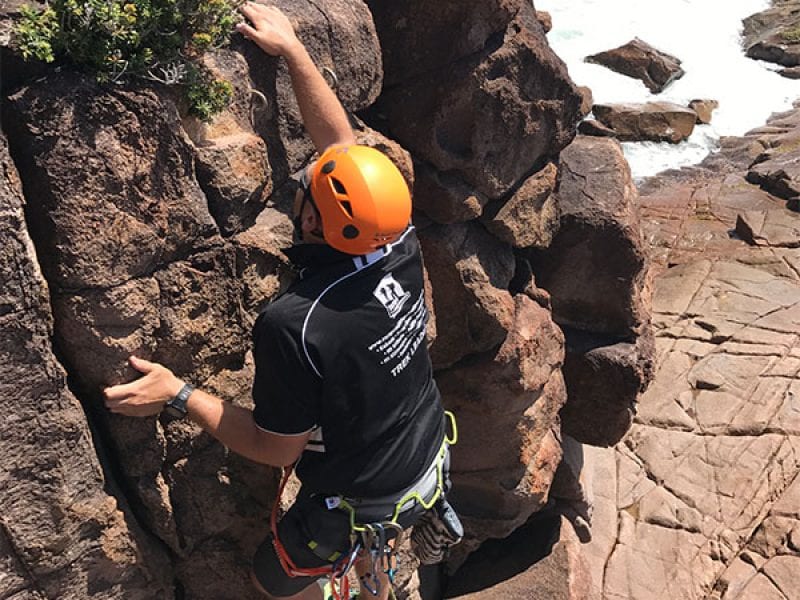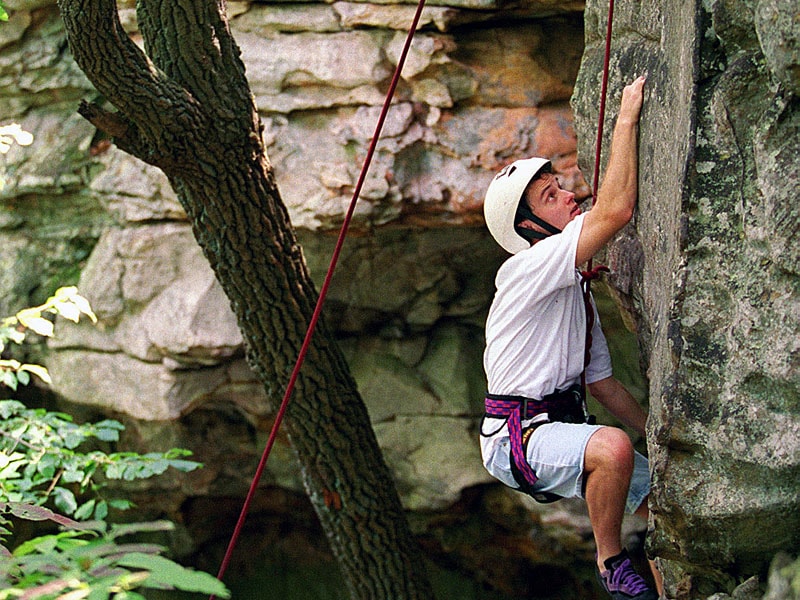
Basic equipment to start climbing
Are you new to climbing and all you have is motivation, but nothing team? Well, if that’s your situation and you don’t know where to start, maybe this article will help you a bit. Let’s see…
Climbing shoes
The tillas, feet of cat, pédulas, or whatever you like to call them, are essential. Why? Because their use facilitates climbing by offering precision and adherence when occupying the feet. It is necessary for you to have your own, because to be effective they must be your size and because, let’s say, sharing shoes is not the most “hygienic”.
Surely your friends who have been climbing for some time will give you several tips for when you go to the store but, beware, there are many myths regarding the choice of pédulas saw?
Ask for a number less than what you wear! Umm this is not so. Each manufacturer uses its own lasts, so there can be considerable differences between two shoes of the same number but different brand. Try them out calmly and “feel” them without thinking too much about the size.
Buy them tight, they all get bigger! False. While there are not a few models that have the fame of enlarging, especially those made of leather with no internal lining, the truth is that most synthetic slippers do not. Ask the salesperson for each particular model.
If it doesn’t hurt, it’s great! False. Pain is insane, especially if it’s your first pair. Ideally, they should be comfortable and not make your feet hurt. The climbing shoe should be worn snugly and should be squeezed to the point before its use begins to be painful. If you keep climbing you will have time to suffer later.
There are models with cords and velcro. The choice of one or the other depends very much on your personal taste. Consider that laces offer greater range and greater accuracy of fit, ideal for very small or female feet.
It is ideal to try the shoes at the end of the day when the feet are “swollen” from so much hustle and bustle, thus emulating the condition of the paws after an approach or a pair of climbing routes. Remember that cat’s feet are designed to be used without a sock, despite the smells that come with it.
Save some silver and don’t buy the most expensive model or the one occupied by the fashion climber. It’s not worth it. Generally when you’re just getting started, and unless you’re a phenomenon, what you scale is simple, plus the lifespan of a sneaker is no more than six months. With a cheap model you will be able to drag your feet over the rock without so much guilt.
Magnesium and Magnesium
If you are going to climb without your magnesium (with magnesium inside) you cannot call yourself a climber (!). The famous white powder will help you keep your hands dry even if the route makes you sweat more than a roasted chicken.

So far we’ve reviewed everything you need to climb boulder self-sufficiently: climbing shoes, magnesium and motivation (we omitted the Crashpad because it’s not essential). But if your goal is sport climbing, you have to put a little more silver in the piggy to buy the remaining equipment.
Harness
The offer is wide and for all tastes and pockets. There are light and robust, for women and men, as well as with adjustable or fixed legs, the latter are the most used in sport climbing.
The main thing is that it is comfortable and your size. Once the harness has been adjusted, and for safety reasons, there should be at least 15 centimetres of tape left at the waist.
Rope
The blessed rope will prevent you from reaching the floor, of course, if your insurer does it right! For beginners it is recommended that the diameter is between 10.0 and 10.5mm, since generally beginners (and some not so much) climb quite a bit in the Top Rope mode, which wears the rope faster.
Diameters smaller than 10mm are justified when you are already plucking. For most climbing sectors, a 60 metre rope is sufficient.
ATC and carabiner with insurance
Why ATC and not a GriGri?! Quiet brother. The GriGri is a fantastic tool that locks itself in case you don’t hold the rope with the brake hand when the climber falls. But since you are learning, why not do it in the best possible way?
By learning to secure with an ATC, which by the way is much cheaper, you will incorporate the habit of holding the rope with the brake hand at all times, under all circumstances. I’ve heard of people between mate and conversations who have placed the rope upside down on the GriGri, which can be very dangerous if you trust that it will automatically lock in the event that the climber falls.
A GriGri with the rope upside down works like an ATC, watch out! Don’t forget to lock the HMS carabiner.
Helmet
It is part of the essential equipment for rock climbing. When you are on foot, stones, carabiners, ribbons, the climber’s ego and even cell phones can fall.
In addition, the helmet will protect your head if you have a bad fall against the wall. It’s a good idea to have one, and of course, wear it! There are several colors; don’t just choose the one that makes you look prettier, make sure it’s your size and fits the shape of your head.
Express ribbons
In this item you can join forces with your friends as for most sectors you will need between 12 and 14 tapes. For your first game is not necessary to buy the lightest and most expensive, as always happens with the equipment, the light tends to have less useful life.
With the equipment we have just indicated you have what it takes to climb in any sector. Remember that the purchase of this material is an investment. Your safety depends on the quality and condition.
With the exception of shoes and magnesium, we do not recommend buying this type of used equipment, as you never know for sure how it has been used previously.
